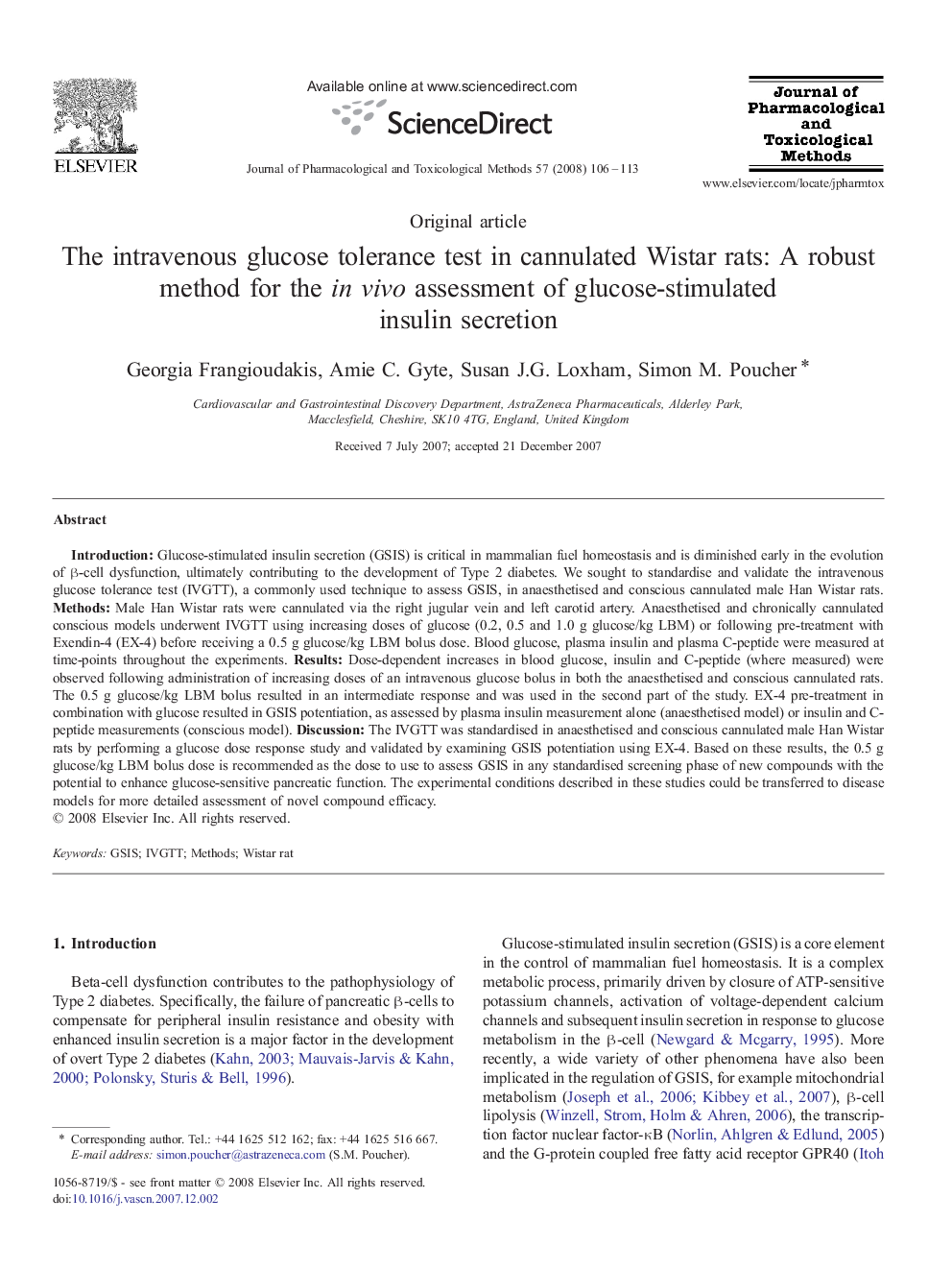| Article ID | Journal | Published Year | Pages | File Type |
|---|---|---|---|---|
| 2549918 | Journal of Pharmacological and Toxicological Methods | 2008 | 8 Pages |
IntroductionGlucose-stimulated insulin secretion (GSIS) is critical in mammalian fuel homeostasis and is diminished early in the evolution of β-cell dysfunction, ultimately contributing to the development of Type 2 diabetes. We sought to standardise and validate the intravenous glucose tolerance test (IVGTT), a commonly used technique to assess GSIS, in anaesthetised and conscious cannulated male Han Wistar rats.MethodsMale Han Wistar rats were cannulated via the right jugular vein and left carotid artery. Anaesthetised and chronically cannulated conscious models underwent IVGTT using increasing doses of glucose (0.2, 0.5 and 1.0 g glucose/kg LBM) or following pre-treatment with Exendin-4 (EX-4) before receiving a 0.5 g glucose/kg LBM bolus dose. Blood glucose, plasma insulin and plasma C-peptide were measured at time-points throughout the experiments.ResultsDose-dependent increases in blood glucose, insulin and C-peptide (where measured) were observed following administration of increasing doses of an intravenous glucose bolus in both the anaesthetised and conscious cannulated rats. The 0.5 g glucose/kg LBM bolus resulted in an intermediate response and was used in the second part of the study. EX-4 pre-treatment in combination with glucose resulted in GSIS potentiation, as assessed by plasma insulin measurement alone (anaesthetised model) or insulin and C-peptide measurements (conscious model).DiscussionThe IVGTT was standardised in anaesthetised and conscious cannulated male Han Wistar rats by performing a glucose dose response study and validated by examining GSIS potentiation using EX-4. Based on these results, the 0.5 g glucose/kg LBM bolus dose is recommended as the dose to use to assess GSIS in any standardised screening phase of new compounds with the potential to enhance glucose-sensitive pancreatic function. The experimental conditions described in these studies could be transferred to disease models for more detailed assessment of novel compound efficacy.
